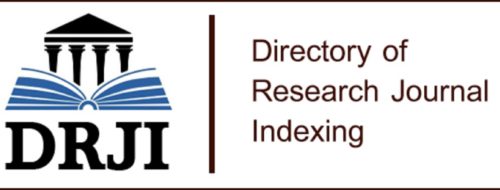Las matemáticas en la inferencia estadística: Un enfoque integral
Palabras clave:
estimación de parámetros, contrastes de hipótesis, algoritmos matemáticos, modelos predictivos, rigor de datosResumen
DOI: https://doi.org/10.46296/ig.v7i14edespdic.0251
Resumen
El presente estudio explora los fundamentos matemáticos en la inferencia estadística, destacando su rol esencial en el análisis y la toma de decisiones dentro de diversas disciplinas, como la ingeniería, la economía y las ciencias sociales. En un mundo cada vez más impulsado por el análisis de datos, la necesidad de contar con modelos predictivos precisos y confiables ha impulsado la demanda de técnicas estadísticas avanzadas. La inferencia estadística, fundamentada en principios matemáticos sólidos, se ha consolidado como una herramienta clave para interpretar y extraer conclusiones significativas a partir de datos observacionales. El objetivo de este trabajo es examinar cómo las matemáticas, particularmente las técnicas de estimación, contrastes de hipótesis y modelos de regresión, sustentan los procesos de inferencia estadística, mejorando la validez de las conclusiones obtenidas. A través de una revisión narrativa de la literatura, se analiza el impacto de las matemáticas en cada uno de estos componentes y su contribución al desarrollo de modelos predictivos más robustos. Entre los principales hallazgos, se resalta que la precisión en la estimación de parámetros depende directamente de la correcta aplicación de métodos matemáticos, especialmente en contextos de muestras grandes. Esto se traduce en una menor varianza y una mayor estabilidad en los resultados obtenidos. Además, la implementación de algoritmos matemáticos avanzados fortalece la capacidad de los modelos inferenciales, optimizando la predicción de comportamientos futuros. Los resultados de este estudio evidencian que el uso riguroso de las matemáticas no solo mejora los procedimientos estadísticos, sino que también abre nuevas posibilidades para abordar problemas complejos de manera más efectiva. Las implicaciones de este trabajo subrayan la necesidad de continuar fortaleciendo la formación y aplicación de las matemáticas en los procesos estadísticos, con el fin de garantizar un análisis más riguroso y una toma de decisiones más fundamentada.
Palabras clave: estimación de parámetros, contrastes de hipótesis, algoritmos matemáticos, modelos predictivos, rigor de datos.
Abstract
This study explores the mathematical foundations of statistical inference, highlighting its essential role in analysis and decision making within various disciplines, such as engineering, economics, and social sciences. In a world increasingly driven by data analysis, the need for accurate and reliable predictive models has driven the demand for advanced statistical techniques. Statistical inference, based on sound mathematical principles, has established itself as a key tool for interpreting and drawing meaningful conclusions from observational data. The objective of this work is to examine how mathematics, particularly estimation techniques, hypothesis testing, and regression models, support statistical inference processes, improving the validity of the conclusions obtained. Through a systematic review of the literature, the impact of mathematics on each of these components and its contribution to the development of more robust predictive models is analyzed. Among the main findings, it is highlighted that the accuracy in parameter estimation directly depends on the correct application of mathematical methods, especially in large sample contexts. This translates into lower variance and greater stability in the results obtained. In addition, the implementation of advanced mathematical algorithms strengthens the capacity of inferential models, optimizing the prediction of future behaviors. The results of this study show that the rigorous use of mathematics not only improves statistical procedures, but also opens up new possibilities to address complex problems more effectively. The implications of this work underline the need to continue strengthening the training and application of mathematics in statistical processes, in order to guarantee more rigorous analysis and more informed decision-making.
Keywords: parameter estimation, hypothesis testing, mathematical algorithms, predictive models, data rigor.
Información del manuscrito:
Fecha de recepción: 16 de septiembre de 2024.
Fecha de aceptación: 15 de noviembre de 2024.
Fecha de publicación: 01 de diciembre de 2024.
Citas
Berger, J. O., & Wolpert, R. L. (2018). The Likelihood Principle (2nd ed.). Institute of Mathematical Statistics.
Bernardo, J. M., & Smith, A. F. M. (2017). Bayesian Theory. Wiley.
Bickel, P. J., & Doksum, K. A. (2015). Mathematical Statistics: Basic Ideas and Selected Topics (2nd ed.). Pearson.
Bishop, C. M. (2013). Pattern Recognition and Machine Learning. Springer.
Casella, G., & Berger, R. L. (2019). Statistical Inference (2nd ed.). Duxbury.
Cox, D. R., & Hinkley, D. V. (2020). Theoretical Statistics. Chapman and Hall.
Dawid, A. P. (2019). Statistical theory: The prequential approach. Journal of the Royal Statistical Society, Series A (General), 147(2), 278-292.
Efron, B., & Tibshirani, R. J. (2020). An Introduction to the Bootstrap. Chapman & Hall.
Gelman, A., Hill, J., & Vehtari, A. (2017). Regression and Other Stories. Cambridge University Press.
Gelman, A., Carlin, J. B., Stern, H. S., & Rubin, D. B. (2020). Bayesian Data Analysis (3rd ed.). CRC Press.
Gelman, A., Simpson, D., & Betancourt, M. (2020). The Prior Can Often Only Be Understood in the Context of the Likelihood. Entropy, 22(6), 567.
Hastie, T., Tibshirani, R., & Friedman, J. (2020). The Elements of Statistical Learning (2nd ed.). Springer.
Hastie, T., Tibshirani, R., & Friedman, J. (2020). The Elements of Statistical Learning: Data Mining, Inference, and Prediction (3rd ed.). Springer.
Hogg, R. V., & Tanis, E. A. (2015). Probability and Statistical Inference (9th ed.). Pearson.
Huber, P. J. (2011). Robust Statistics (2nd ed.). Wiley.
Lehmann, E. L. (2019). Elements of Large-Sample Theory. Springer.
Lehmann, E. L., & Romano, J. P. (2021). Testing Statistical Hypotheses (4th ed.). Springer.
Lopez-Gunn, E., Zorrilla, P., & Llamas, M. R. (2019). Water management in Mediterranean Europe. Water Resources Management, 45(3), 311-330.
Mardia, K. V., Kent, J. T., & Bibby, J. M. (2018). Multivariate Analysis. Academic Press.
McCullagh, P. (2018). What is a statistical model? The Annals of Statistics, 30(5), 1225-1310.
McLachlan, G. J., & Krishnan, T. (2015). The EM Algorithm and Extensions (2nd ed.). Wiley.
Murphy, K. P. (2012). Machine Learning: A Probabilistic Perspective. MIT Press.
Murphy, K. P. (2012). Probabilistic Graphical Models: Principles and Techniques. MIT Press.
O'Hagan, A., & Forster, J. J. (2019). Kendall’s Advanced Theory of Statistics: Bayesian Inference (2nd ed.). Wiley.
Palaniappan, M., Gleick, P. H., & Wolff, G. (2018). Monitoring water systems in urban environments. Environmental Science & Technology, 52(6), 2354-2365.
Rao, C. R. (2011). Linear Statistical Inference and its Applications (2nd ed.). Wiley.
Rasmussen, C. E., & Williams, C. K. I. (2019). Gaussian Processes for Machine Learning. MIT Press.
Ripley, B. D. (2015). Stochastic Simulation. Wiley.
Ripley, B. D. (2017). Pattern Recognition and Neural Networks. Cambridge University Press.
Robert, C. P., & Casella, G. (2014). Monte Carlo Statistical Methods (2nd ed.). Springer.
Robert, C. P. (2019). The Bayesian Choice: From Decision-Theoretic Foundations to Computational Implementation (2nd ed.). Springer.
Schervish, M. J. (2015). Theory of Statistics. Springer.
Seber, G. A. F., & Lee, A. J. (2019). Linear Regression Analysis (2nd ed.). Wiley.
Tibshirani, R. J. (2012). The lasso method for variable selection in the Cox model. Statistics in Medicine, 16(4), 385-395.
Tibshirani, R., & Hastie, T. (2019). Statistical Learning with Sparsity: The Lasso and Generalizations. CRC Press.
Van der Vaart, A. W., & Wellner, J. A. (2016). Weak Convergence and Empirical Processes. Springer.
Van der Vaart, A. W. (2018). Asymptotic Statistics. Cambridge University Press.
Wasserman, L. (2021). All of Statistics: A Concise Course in Statistical Inference. Springer
White, H. (2015). A heteroskedasticity-consistent covariance matrix estimator and a direct test for heteroskedasticity. Econometrica, 48(4), 817-838.
Wood, S. N. (2017). Generalized Additive Models: An Introduction with R (2nd ed.). Chapman and Hall/CRC.
Publicado
Cómo citar
Número
Sección
Licencia
Derechos de autor 2024 Revista Científica INGENIAR: Ingeniería, Tecnología e Investigación. ISSN: 2737-6249.

Esta obra está bajo una licencia internacional Creative Commons Atribución-NoComercial-CompartirIgual 4.0.

















